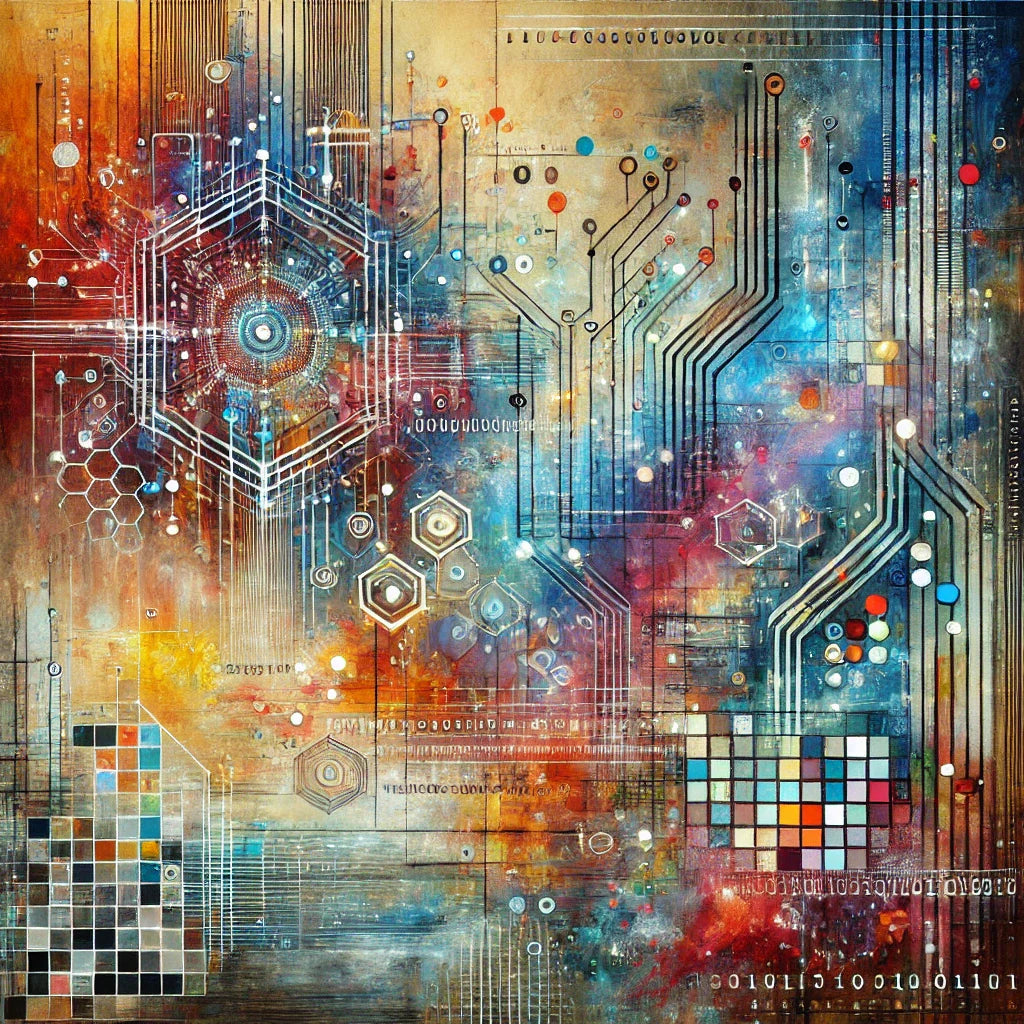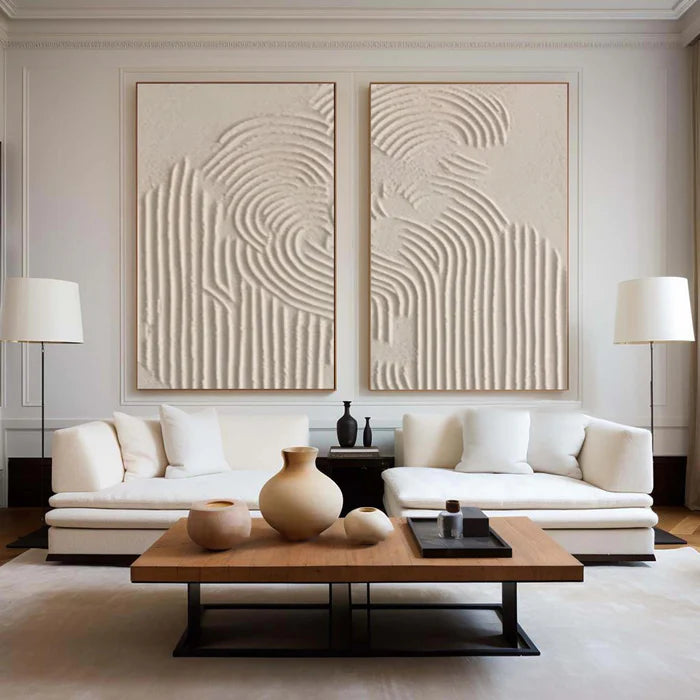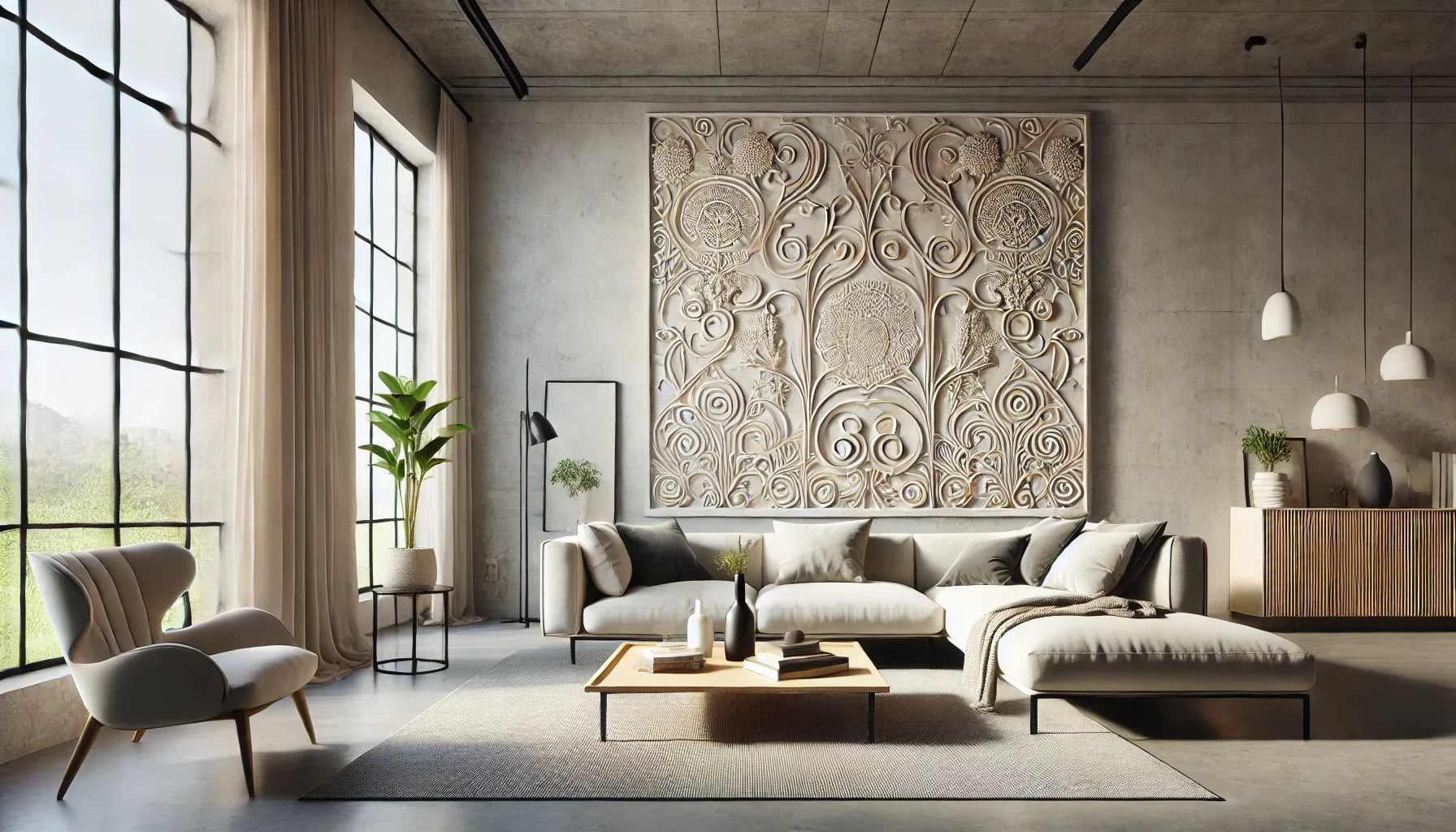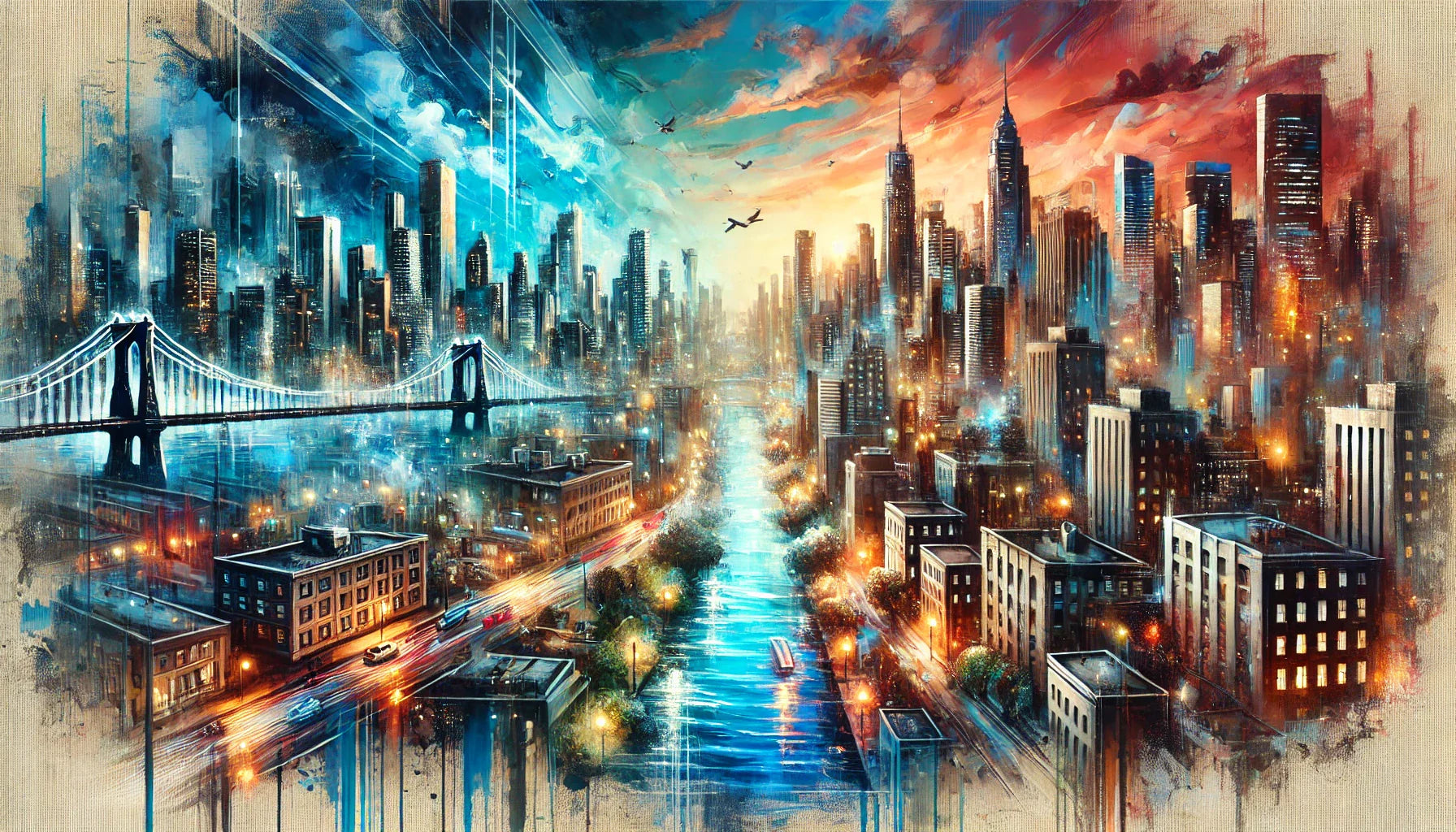
Exploring the Intersection of Abstract Art and Technology
Today Abstract Art and Technology are complementing each other. So far as Abstract art is concerned, it has always been a space for not only creativity and experimentation, but also pushing boundaries.
As it is known for its focus on shapes, colours, and forms which do not directly reflect reality, therefore, it has been a playground for artists to express emotions in addition to their concepts, and ideas in unique and peculiar ways.
Over the course of many years, abstract artists have continually looked up for new techniques to stretch their creativity. They started this with the groundbreaking work of the pioneers namely, Wassily Kandinsky and Kazimir Malevich.
In the current era, this tradition of pushing limits is evolving even further thanks to the technological innovations that have has opened up exciting new possibilities. Abstract artists are now blending conventional methods with futuristic and digital tools to come up with innovative works that merge the physical and virtual realm. In today's world the new art froms include virtual reality art and augmented reality art. This means the usage of technology in art.
How Abstract Art and Technology Have Evolved
The birth of Abstract art in the early 20th century, was a direct response to the various limitations posed by art that was in representational form. These Artists turned away from producing realistic imagery, rather they focused not only on form, colour, and texture in an attempt to express their inner worlds. With the passage of time, technological innovations, opened up new ways for artists to explore abstraction. Thus came into being Art and technology. Photography and film to name a few. These innovations allowed artists to experiment with their materials and manipulate them in ways that were not possible before.
Fast forward to today, and the digital age has brought even more exciting tools and methods into the mix. With the rise of digital art, artists have discovered fresh ways to explore abstraction through digital means. Additionally, the introduction of new media art as well as virtual reality art (VR) and augmented reality art (AR) have even further expanded the possibilities allowing abstract artists to offer new dimensions and sensory experiences to work with. The tech-art fusion of artistic experimentation with the latest technology is creating a whole new world of abstract art that now reimagines what art can be.
Technology as a Catalyst for Change in Abstract Art
Not only has the technology become both a catalyst for innovation but also a tool for transforming traditional art forms. Technology in art is the new rage. As the technology grows the introduction of digital tools for instance graphic design softwares and 3D modeling tools have afforded artists a whole new set of possibilities. New Media Art and aforesaid tools enable the artists to play with colors along with shapes and that too in real-time. Hence, the creation of dense layers of abstraction once considered impossible using only physical materials.
In the present world of mixed media, artists are increasingly mingling digital elements with traditional materials. Some create art installations where large-scale digital projections interact with physical sculptures or even paintings. Mixed media now has become a new trend. This mixture of the real and digital worlds challenges the audience's perceptions inevitably creating immersive experiences. The same were regarded impossible with traditional art alone. Such installations are pushing the boundaries of what what is considered as an “art space.” The result is immaculate.
With the rise of virtual reality (VR) along with augmented reality (AR), the possibilities for abstract artists have been increased by manyfold. New Media art and Virtual reality art is such a concept that creates fully immersive worlds where viewers are not just mere observers but actually active participants. Here digital art is incorporated. In these virtual spaces, they can interact with abstract forms, shapes, and colors in three dimensions. Similarly, AR overlays digital elements onto the real world, allowing abstract works to interact with the environment around them. Art and Innovation give abstract artists new ways to engage with their audience and expand the boundaries of their creative expression. Technology in art is now transforming the art space.
Interactive Art: A New Dimension of Engagement:
In addition to mixed media, another most exciting development in the realm of abstract art is the introduction of interactive art. This paradigm shift enables the audience to actually engage with the artwork in a meaningful fashion. Instead of just simply observing, viewers can now in real-time influence how the artwork evolves. Sometimes even allowing them to alter its form or color based on their own movements in addition to touch, and voice. This is a sub-category of digital art.
Take for example, imagine an abstract art where sensors are installed. This has been made possible by use of technology in art. They track the movements of viewers and modify the artwork there and then. These dynamic methods now allow the viewers into the creative process. Art and Innovation are enabling them to actually become the co-creators of the artwork. This type of interactive art in principle bridges the gulf between the viewer and the artist. As a result experience becomes more personal and immersive. Art Installations of interactive art are taking digital art to another level. New Media art also plays an important role here.
The Power of Digital Tools in Artistic Exploration
Art and innovation are going hand in hand. At the heart of this transformation in abstract art is the usage of digital tools along with art Installations. These tools offer artists unmatched flexibility to test with various forms of abstraction. Softwares such as Adobe Photoshop and Illustrator, allow the artists to play with colors and shapes. In ways that were once considered impossible. These tools enable artists to quickly explore a wide variety of possibilities. Thus creating complex and dense compositions that might have been too labor-intensive with conventional techniques. Virtual reality art and augmented reality are some of the digital art.
Yet another appealing aspect of utilising digital tools is the freedom that they offer. This is another example of Art and Innovation. Artists can now test with texture, light, and form. The can do so without the worry of constraints of physical materials. Art Installations are placed to experience these. They can work in layers, adjust elements in real-time, and even reverse their decisions instantly, making the process of artistic creation more fluid and exploratory.
A Blend of Traditional and Digital Art Practices
Even though technology has revolutionised abstract art, conventional art techniques still play an important role. Many modern artists who utilise digital tools still continue to draw inspiration from physical media. The beauty of abstract art lies in its ability to transcend materials. Now technology is increasingly being used to actually enhance but not replace the traditional practices.
For instance, some artists combine physical paintings with digital projections. It creates works that exist in both the physical and virtual realms. This fusion of the traditional and the modern adds new dimensions to the exploration of abstract concepts. This allows for a deeper engagement with texture, space, and movement. These mixed media experiences enable artists to push their creative boundaries even further.
Looking Ahead: The Future of Abstract Art
Th technology continues to grow at an unbelievable pace. Art techniques with the help of technology are growing. Which means the future of abstract art is nothing but incredibly exciting. This rise of interactive art, digital art, Virtual reality art, and Augmented reality art promises to reshape the viewers' experiences of abstraction. These emerging technologies provide a rich landscape for experimentation. They offer artists the chance to break free from traditional constraints. Additionally they allow them to explore new paths of creative expression.
This blend of art and technology has already resulted in immersive art installations. These are the new art techniques New interactive sculptures, and digital works that challenge our understanding of reality and art itself as some such examples. As artists continue to utilise these new tools, we can expect to see even more groundbreaking works. These words will redefine the boundaries of what abstract art can be.
In this new age of tech-art fusion, abstract art is not just evolving; it is transforming. Art and technology go hand in hand. New and latest art techniques are being introduced everyday. The relationship between technology, creativity, and perception is changing. The abstract artists are are at the forefront. With endless possibilities for innovation and exploration, the future of abstract art with use of technology looks incredibly bright, filled with uncharted territory and new frontiers to discover.
Explore more at VinchyArt



